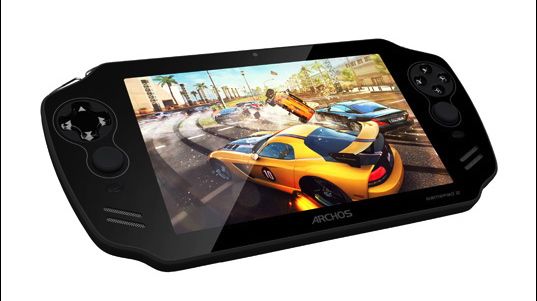Why you can trust TechRadar
The Archos GamePad 2 is slightly better executed than the Wikipad, its natural competitor. But it's been designed with gaming in mind rather than awkwardly switching between tablet and gaming console. A 7-inch screen for a portable console is certainly huge. To put that in perspective, the PS Vita is 5 inches and the Nintendo DS XL is just under 4 inches.
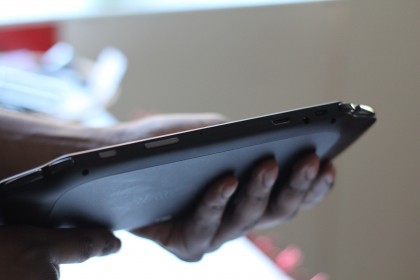
This can present a problem with portability. The Vita and 3DS will slip into your pocket, whereas a 7-inch tablet with added controls certainly won't.
Saying that, the GamePad doesn't look overwhelming and it isn't as bulky as the Wikipad. You could easily play this on your morning commute without looking too silly. The Wikipad's huge external controller makes it feel like you're a toddler holding a PlayStation DualShock 3.
The GamePad 2 is now far more portable and that's thanks to the improved design. The secondary trigger buttons are located just above the main trigger buttons to save space. Though to be honest, with the simplicity of most Android games at the moment, it's unlikely you'll use them frequently.
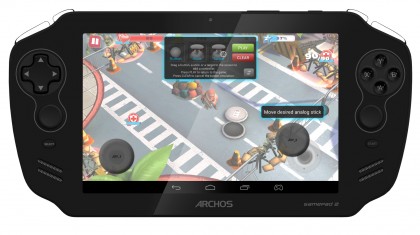
It's also solidly built. The device feels like a standalone gaming device rather than a souped-up tablet. At 10mm thin and weighing only 400g it's one of the slimmest and lightest gaming devices on the market. That matte back casing will also withstand a bit of rough and tumble.
Much like the PS Vita, the power and volume buttons are located on the top of the unit so chances of you accidentally pressing them are slim. The HMDI port, USB port and headphone jack, also like the Vita, are topside.
The GamePad 2 boasts decent connectivity with HDMI and USB, and there's an SD card slot for expandable memory of up to 64GB - with 8GB already on board. Few Android games are large files, most averaging at about 40MB, so you should be able to store around 40 games on the device.
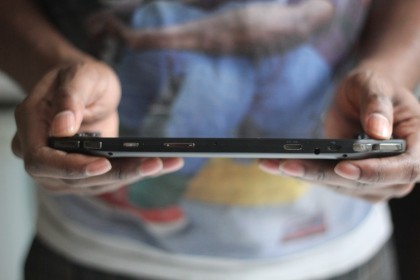
But as Android games are becoming more accomplished, with titles like Modern Combat, the file sizes are soaring - with some even topping out at 2GB. This immediately calls into question the GamePad 2's longevity because without an SD card you can only hold four high-quality games.
The costs then begin to rack up as Android games increase in size, you'll have to invest in more SD cards. You can delete and re-download games from the market place but that's just extra hassle.
The actual screen resolution comes in at a decent 1280 x 800, less impressive than some of the more recent tablets on the market such as the Kobo Arc 10HD or Nexus 7, but it's sharp enough to stand up to better devices. There's little glare in direct sunlight and generally games look crisp.
There are two stereo speakers either side of the screen on the front of the GamePad 2, which sound as you would expect from small exterior tablet speakers. They project well enough at a moderate level but if turned up too loud they do begin to sound tinny.
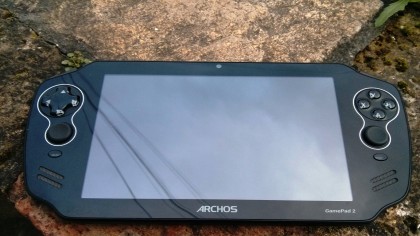
The twin sticks perform really well with games, especially first person shooters. Clearly a lot of effort went into the designing them because they feel as comfortable and ergonomic as any other established controller.
In fact the entire layout of the button configuration, including the trigger buttons, suggests that Archos spent time getting this right. Operating the twin sticks and trigger buttons simultaneously feels comfortable and never cumbersome.
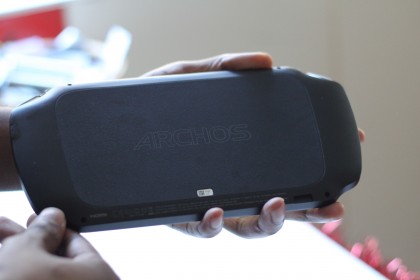
The GamePad 2 comes with a button configuration tool that allows you to map the physical buttons so they press a specific part of the screen instead.
It makes sense to include a tool that allows button configuration, especially since customisation is one of Android's core values, but it needs to be better executed because currently it's confusing and often non-responsive.
You'll often find yourself tapping the screen furiously trying to re-configure the button map - at occasionally it will just force close. Hopefully this is something Archos can improve on with a software update, but for now it's more frustrating than useful.
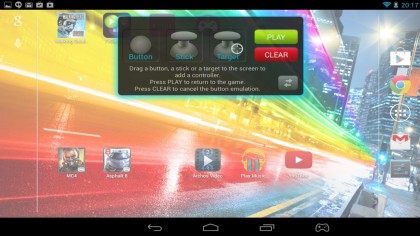
Although this is a gaming device, it's also designed to be treated like a standard Android tablet too. This means you can watch movies, browse the web, read books and use apps as you would do any other slate. Watching a movie or streaming any live TV works really well on the GamePad 2 as its controller-like design makes it comfortable to hold for an extended period of time.
The same goes for reading a book, although reading in a horizontal view is a bit odd. Auto screen rotate is available but reading a book on the GamePad 2 in the vertical position doesn't feel very natural with the extra controls that stick out either side.
The GamePad 2 only has a front-facing VGA camera that has limited use and no flash. The Android editing options are available including picture filters and setting the white balance. But the camera is clearly designed primarily for Skype calls and gamer profile shots, not much else.
